In this blog I will give updates about three space exploration missions described in earlier posts and report about two new ones.
New Horizons
I will start with New Horizons . In Close Encounter with Pluto I described how this spacecraft had a successful flyby with minor planet Pluto on 14 July 2015 and in an update New Horizons that it was on its way to 2014 MU69 , an object in the Kuiper belt.
A few days ago, on 1 January 2019, it had a flyby of Ultima Thule, as
2014 MU69 has been nicknamed. The distance between Earth and Ultima Thule is at the moment 6.6 billion km, never before has there been a close encounter at such a huge distance! (Distances in the picture are expressed in Astronomical Units, 1 AU = 150 million km)
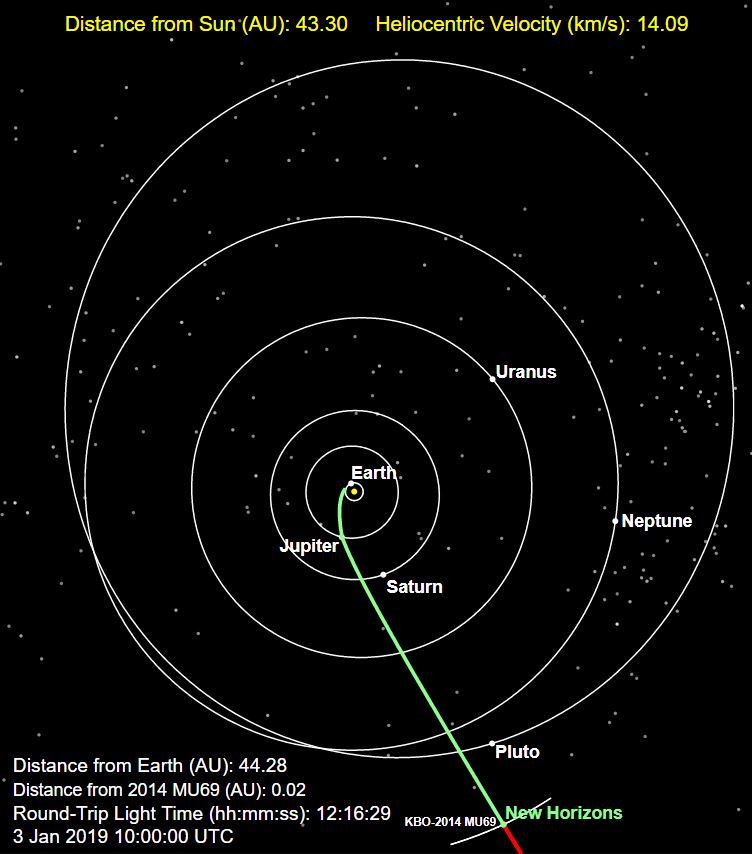
During the brief flyby, New Horizons collected about 7 gigabytes of data, which in the coming months will be sent back to Earth. Radio signals take more than 6 hours to reach Earth, the 15 Watt transmitter can send ~ 500 bits per second, it may take 20 months.
Here are the first images. Left a vague color image, middle a more detailed black and white one, right the merger of the two, a kind of reddish snowman, size about 31 km. As was already expected, Ultima Thule is a so-called contact binary, it consists of two halves, now dubbed Ultima (the larger one) and Thule.
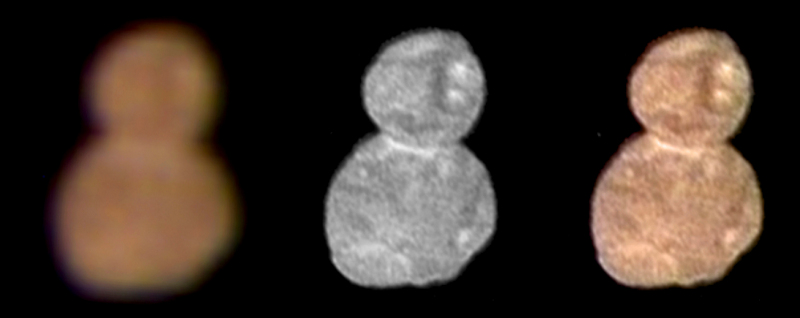
Mars InSight
A few months ago I wrote a blog Landing on Mars, about the Mars InSight spacecraft. Mission of this spacecraft is to study the interior structure of Mars. It has now deployed the seismometer, to detect Marsquakes.
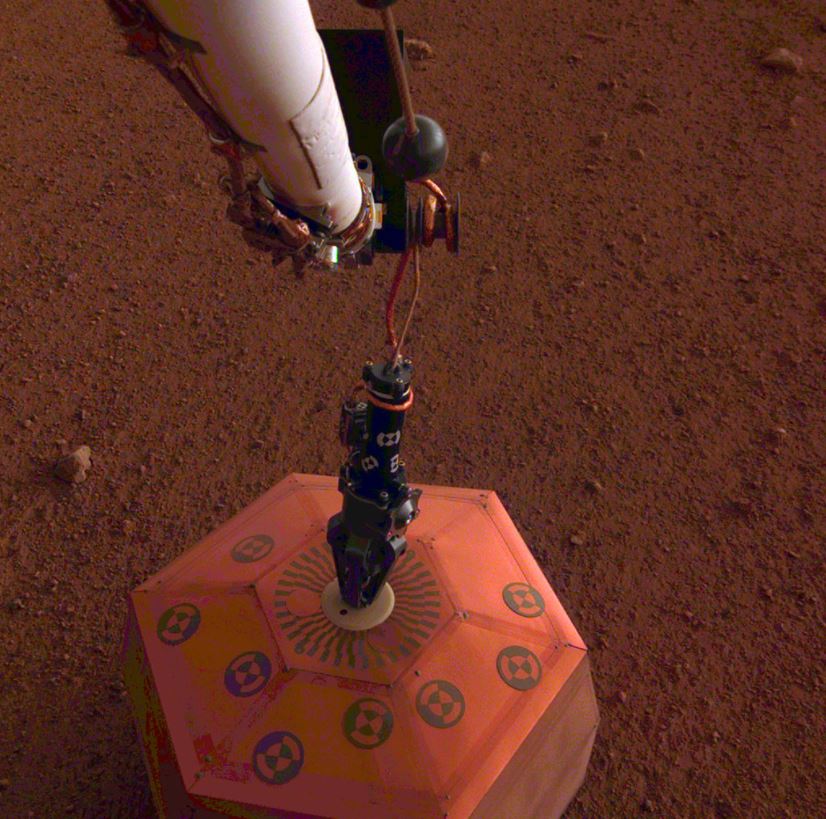
Next month InSight will start drilling into the surface of Mars.
Hayabusa2
As I reported in my blog Hayabusa2 , it came as a surprise that the surface of asteroid Ryugu was very rough and rocky. Here is a picture of Ryugu’s surface.
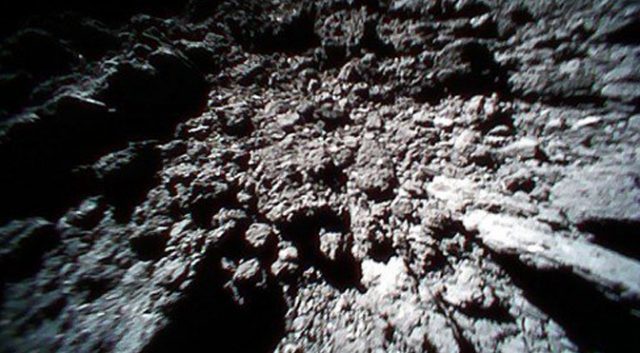
The first sampling touchdown, scheduled for October, was postponed until at least the end of this month. The engineers are still studying how to land the spacecraft safely.
The two tiny hopping Minerva rovers are still working correctly and have been renamed Hibou (French for Owl) and Owl. If you are curious about the reason, read this: Naming our MINERVA-II1 rovers 😉 .. Don’t think that scientists have no sense of humor 😉
Osiris Rex
When I wrote my blog about Hayabusa2, I was unaware of another mission to send a spacecraft to an asteroid, collect some material and bring it back to Earth. It is an American one, the Osiris Rex mission. Here is some information:
Launched 8 September 2016 with as destination the asteroid 101955 Bennu. Bennu is even smaller than Ryugu, about 500 m diameter. In December 2018 Osiris Rex reached Bennu and on 31 December it fired its thrusters to go into orbit. It will remain there for the next two years, studying the asteroid and it will try to acquire at least 60 gram of regolith (the surface material of Bennu) in a procedure very similar to Hayabusa’s.
Here is an artist impression of Osiris approaching Bennu, with the sampler horn extended.
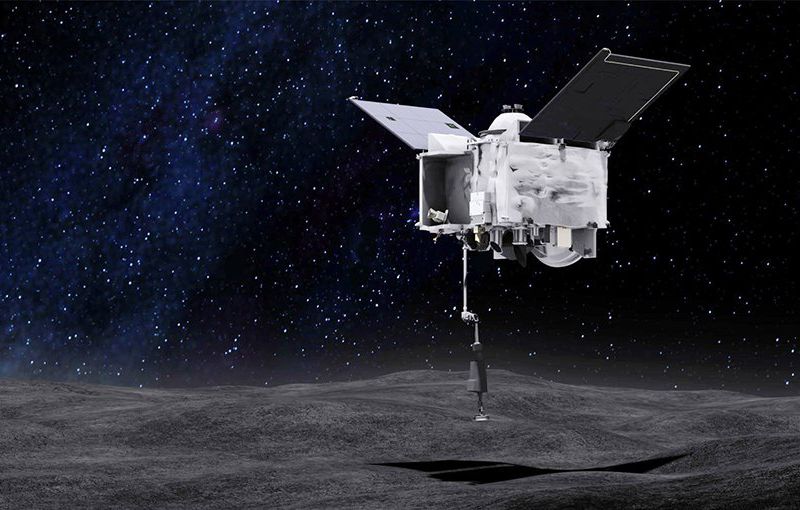
And here is an image of Bennu, taken by Osiris.
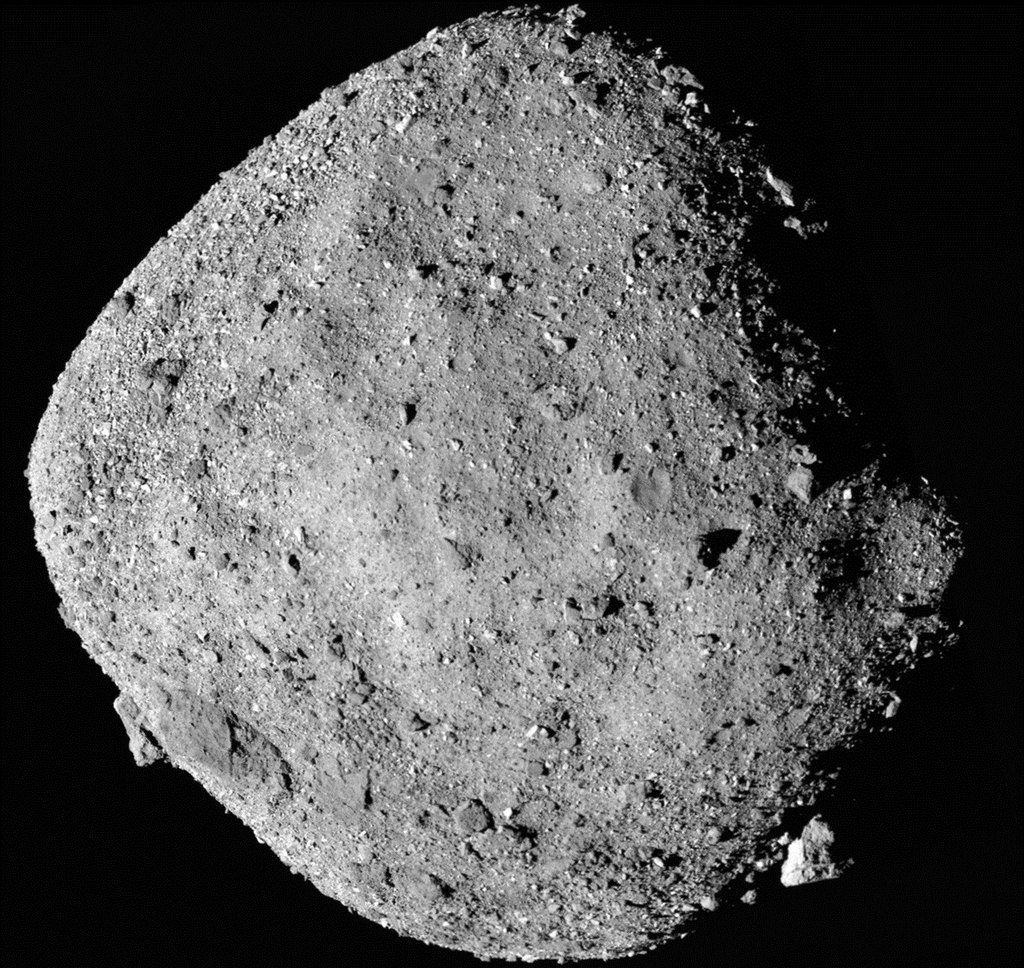
Planned return date is 24 September 2023.
One aspect of the mission is worth mentioning here. OSIRIS is an acronym for Origins, Spectral Interpretation, Resource Identification, Security. Why security? Because Bennu is a potentially hazardous object, it is possible it might hit Earth in the future. Don’t worry, not in our time, but possibly between 2175 and 2199. The uncertainty is there because the orbits of these “small” asteroids are influenced by many factors, for example the disturbing influence of the other planets. But also the effect of heating and cooling by the sun light, the Yarkovsky effect and it is this effect that Osiris will study. (Forget about this if you find it too complicated… 🙂 )
Chang’e-4
China confirmed its role as global player in space exploration on 3 January 2019, when it landed for the first time in history a spacecraft on the far (“dark”) side of the Moon. The Chang’e 4 was launched on 7 December 2018 and consists of a lander and a rover, the Yutu-2. The set-up and landing procedure were similar to the Mars Pathfinder mission, after a powered descent of the lander to the Moon surface, the rover rolls down a ramp (see my Landing on Mars post).
Here is an image of the Yutu-2, taken by Chang’e 4, just after deployment.
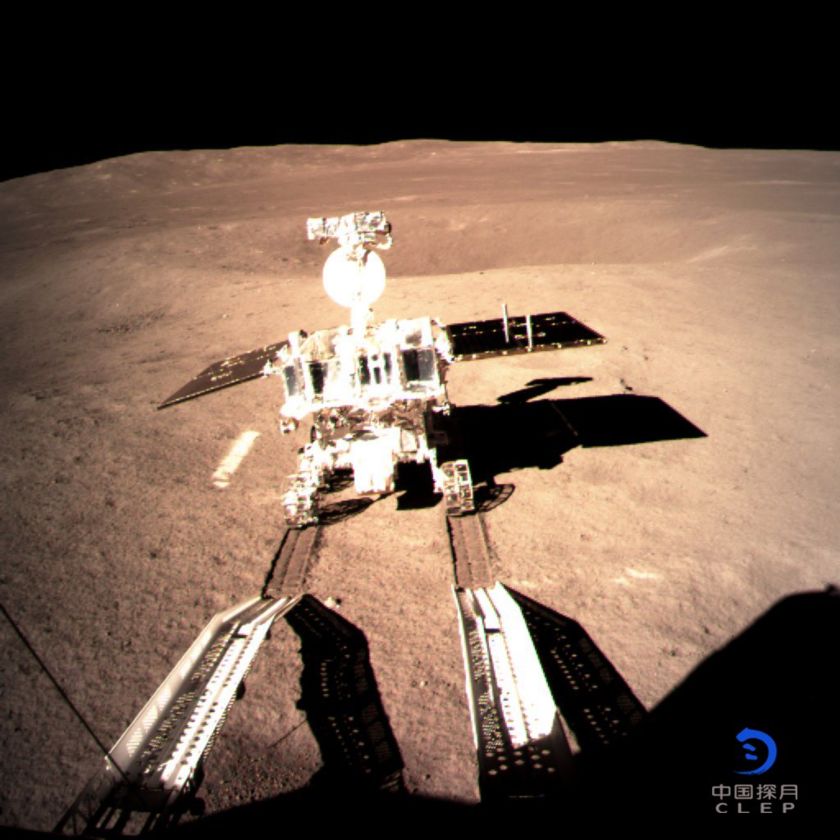
Compared with the missions to Mars and the asteroids, a Moon mission has the advantage that the destination is ~ 384.000 km away from Earth, communication signals take only a bit more than one second. However, for a spacecraft on the far side of the Moon, there is a problem, the Moon itself will block signals to Earth!
China has found an elegant solution for this problem: a separate satellite has been launched, the Queqiao, a few months before the Chang’e 4 launch. This communication satellite is now in a lunar orbit and will transmit the signals of the spacecraft to Earth and vice versa.
Actually the Queqiao is not orbiting the Moon, but orbiting the L2 Lagrange point, about 60.000 km above the far side of the moon. In my blog Where does the Moon come from, I have discussed a bit the concept of Lagrange points, where the gravitational force of Moon and Earth are in balance. Too complicated to explain the details, check Wikipedia for Halo Orbits.
This infographic illustrates the Chang’e mission. The Chang’e 4 has landed in the Aitken basin, near the Moon’s South Pole. This huge impact crater is 2500 km in diameter and 13 km deep !
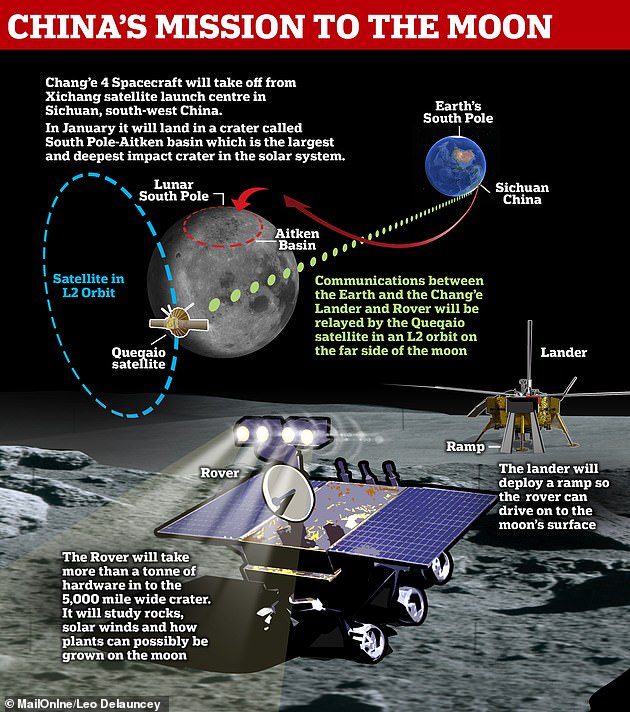
There is one amusing detail/mistake in this infographic. It looks like the rover has four headlights! Has the creator of the infographic assumed that you needed lights, because this is the dark side of the moon?
I will update this blog when there are new developments.

Thanks for sharing. I am interested in this subject.